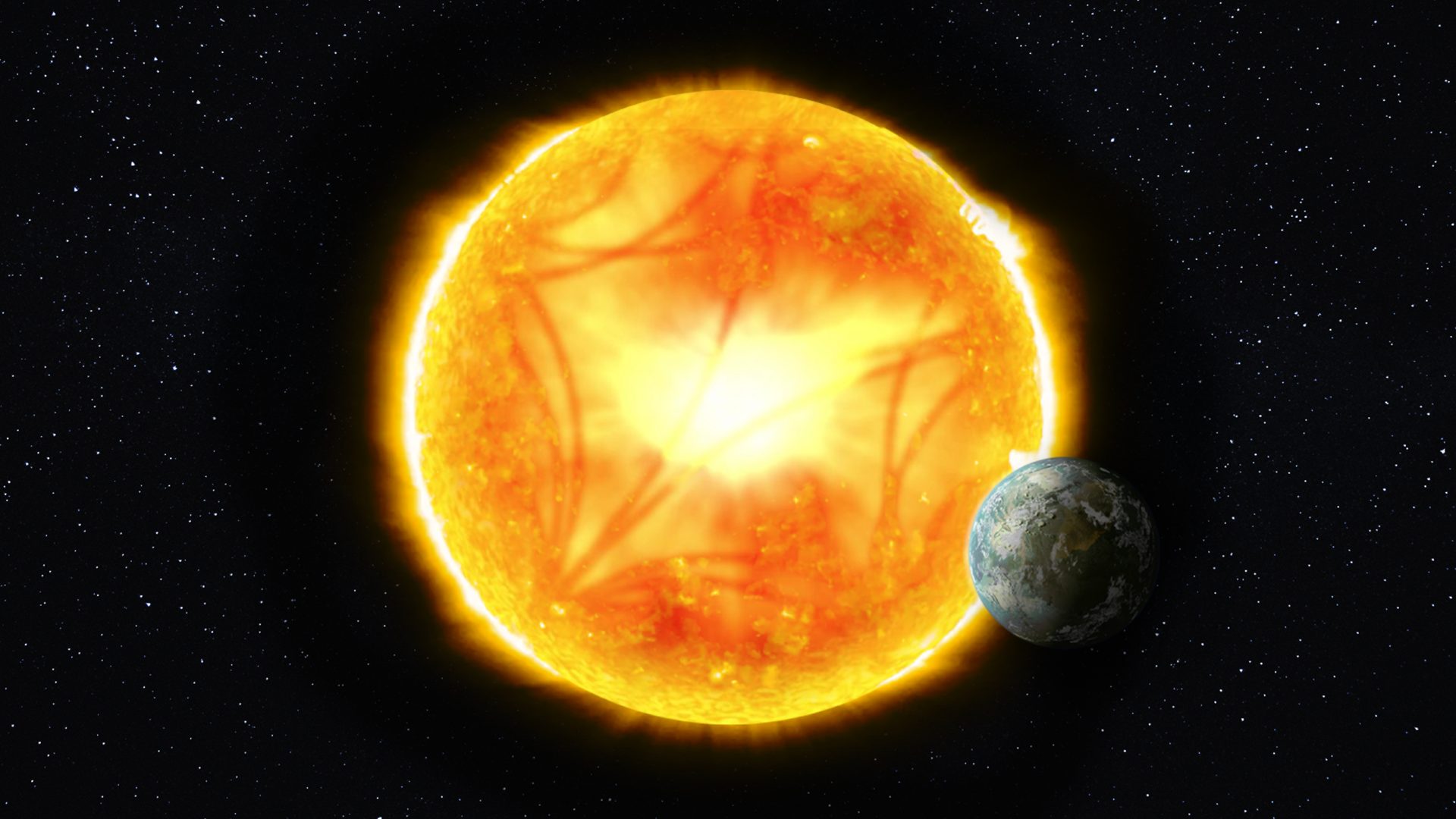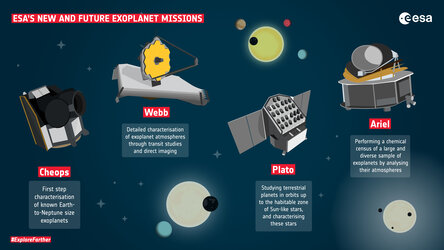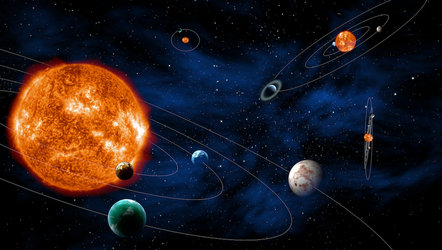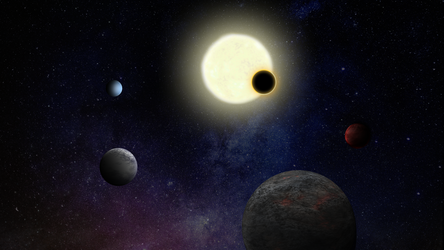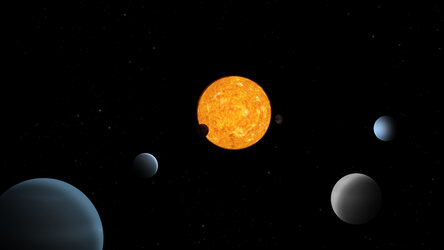Asteroseismology – the music of the stars
Space is quiet, as no sound can propagate through the vacuum. Billions of stars try to overcome this silence with their songs, but to no avail. As their music contains a lot of information, scientists searched for a way to listen. Stars’ sounds are created when they expand and contract, and during this process their brightness oscillates along with the expansion and contraction. Because scientists have found these small brightness variations in gathered starlight, they can now ‘hear’ the music. ESA’s Plato mission will look for the oscillations and reveal the orchestra of many stars.
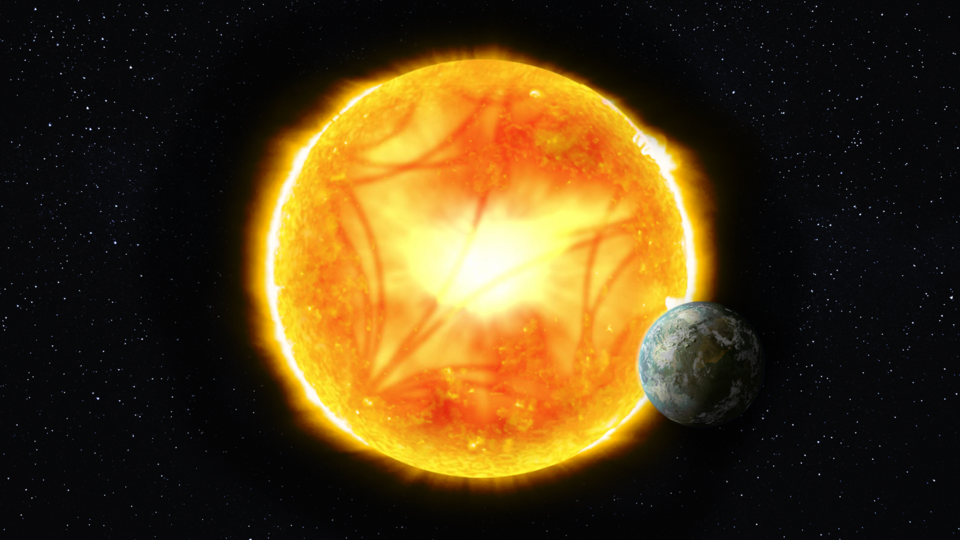
The art of listening to stars started with our own Sun. Similar to how geophysicists learn more about Earth’s interior by studying waves created by earthquakes, astronomers study the waves of the Sun and other stars. The speed of sound through a medium carries information about that medium and also about the object in which the sound bounces around.
Sound waves are pressure waves, and their speed is influenced by the temperature and density of the gas through which they propagate. You may have experienced this yourself: when taking a breath of helium from a balloon, your voice produces a funny high-pitched version of itself as the sound waves travel through a lighter gas in your lungs.
The brightness variations of stars inform scientists about their internal workings. And by linking this information to computer models mimicking stars, scientists can deduce general properties like their mass, radius and age.
Two types of waves
Two different kinds of waves have been discovered. One set is called the p-modes; these are pressure waves travelling through a star caused by local in- and outward expansions and contractions of the gas in the star. The other set is called g-modes; these are gravity waves connected with local horizontal rather than radial displacements of the stellar gas. These g-modes are a bit like the waves on Earth’s oceans.
Which modes occur depends on the type of star, for instance our Sun has mainly p-modes. Stars can have both types of modes and some even have the two modes couple to one another, meaning that their waves have the characteristics of both a pressure and a gravity wave.
Analysis of the p-modes informs us about the size of the star. Additionally, the p-modes travel through the interior of a star and are influenced by the density and distribution of the gas there. The waves reveal internal properties that allow scientists to derive the mass of a star. By inputting all these properties into computer models, scientists can accurately work out the age of a star.
The g-modes are more complicated, and scientists have only recently started to learn how to interpret them. These modes tell us about the rotation of the core of stars. Additionally, g-modes have already been used to get an age-estimate for old red giant stars and for massive young blue stars.
Relevance for exoplanets
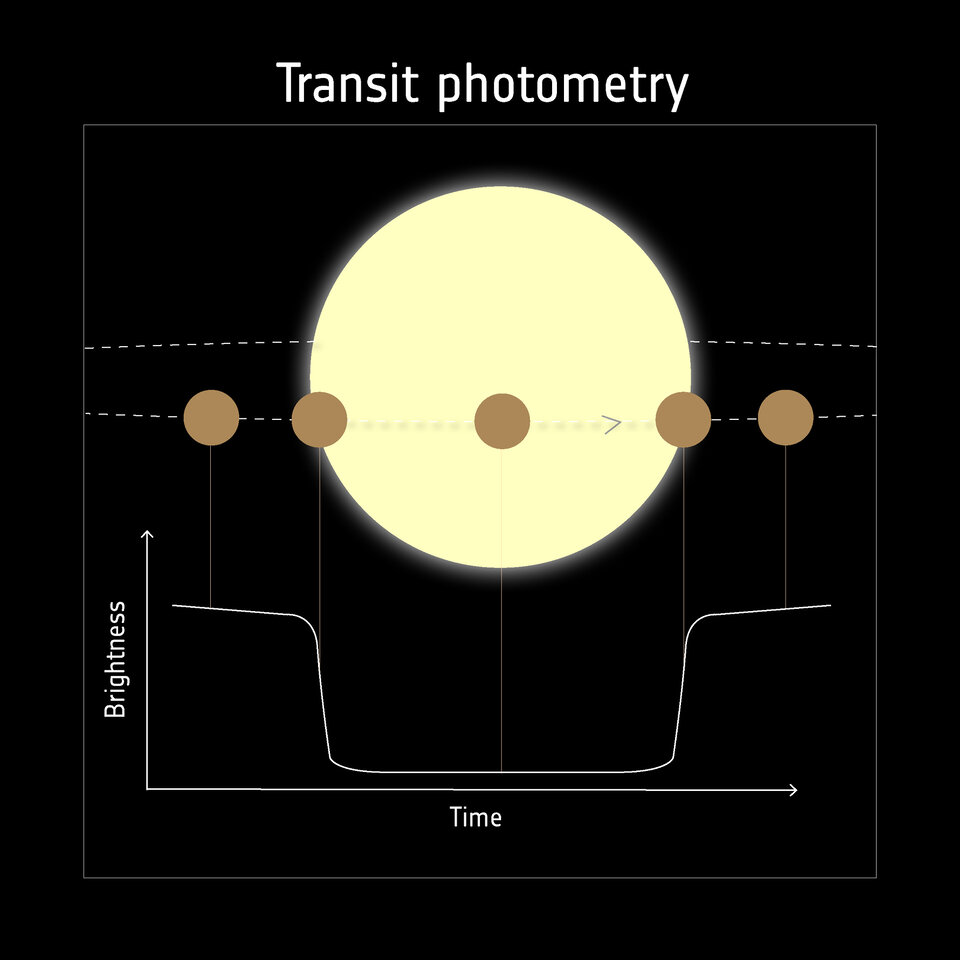
Information derived through asteroseismology helps advance exoplanetary research. There are three factors of great importance.
Using asteroseismology, the radius of a star can be determined. This is an important factor for the transit method detection technique, in which the size of a planets is determined by the fraction of starlight it blocks. If the radius of the star is known accurately, a planet’s size can also be determined accurately.
Secondly, asteroseismology is the only method to provide accurate and precise ages of stars. Knowing the age of a star is important in the search for habitable planets. When we look at our Solar System we see that the habitable zone (the distance from the host star where liquid water can exist on planets) has shifted during the evolution of our Sun. In our search for habitable worlds, it is essential to know where the host star and its planetary system are in their joint evolution.
As a final factor, asteroseismology will help measure the mass of planets by improving the mass estimate of the host star. When we know both the mass and size of a planet we can infer whether it is rocky, gaseous or something else. The masses of planets are determined using the radial velocity or astrometry methods. These methods measure the gravitational pull of a planet on its host star, which depends on its mass.
Why is Plato needed?
With ESA’s Plato mission, we can study the brightness variations of stars at a level that has not been possible before for such large samples. Plato will increase the sample of some hundreds of Sun-like stars with measured brightness oscillations to tens of thousands.
With its groundbreaking techniques Plato will help astronomers measure stellar sizes, masses, and ages with a precision never achieved before, and it will do so for much bigger parts of the sky than so far monitored.


